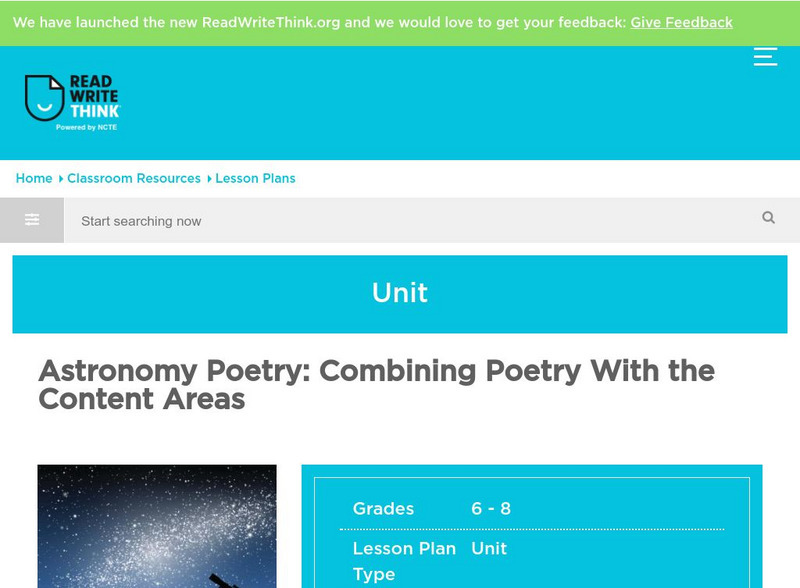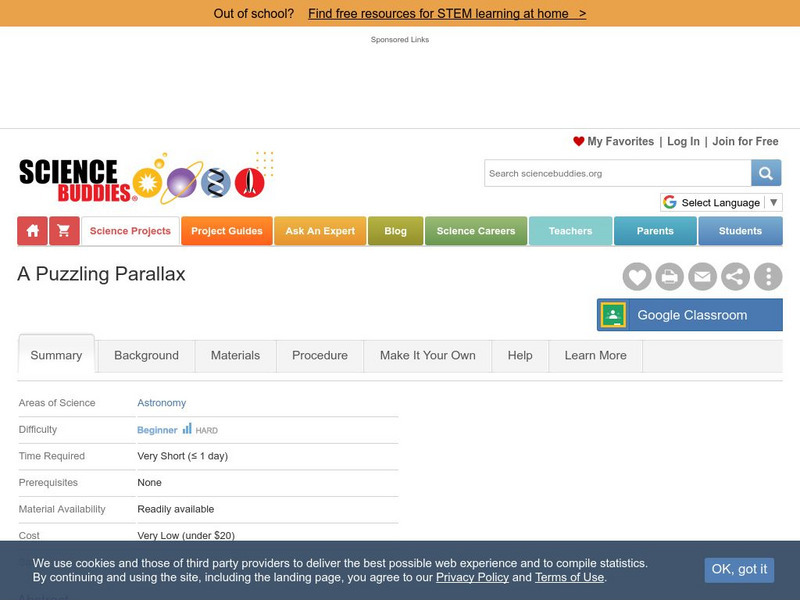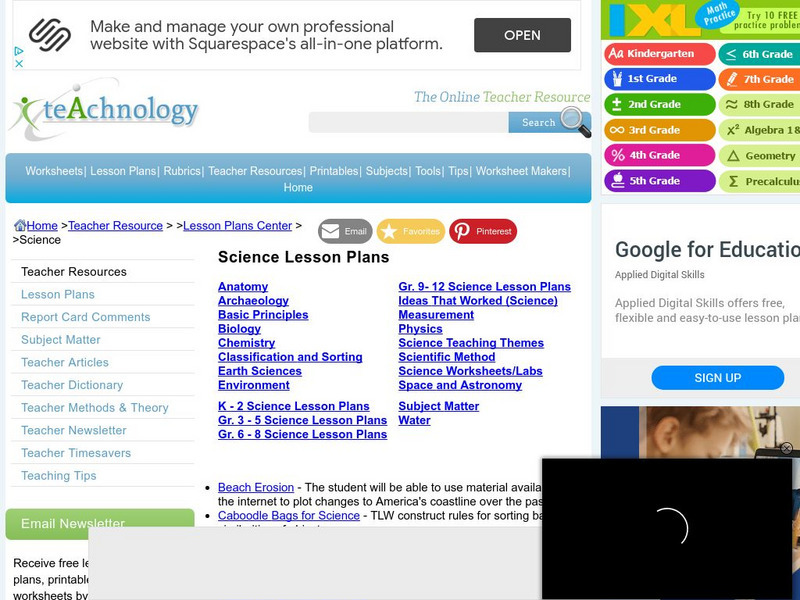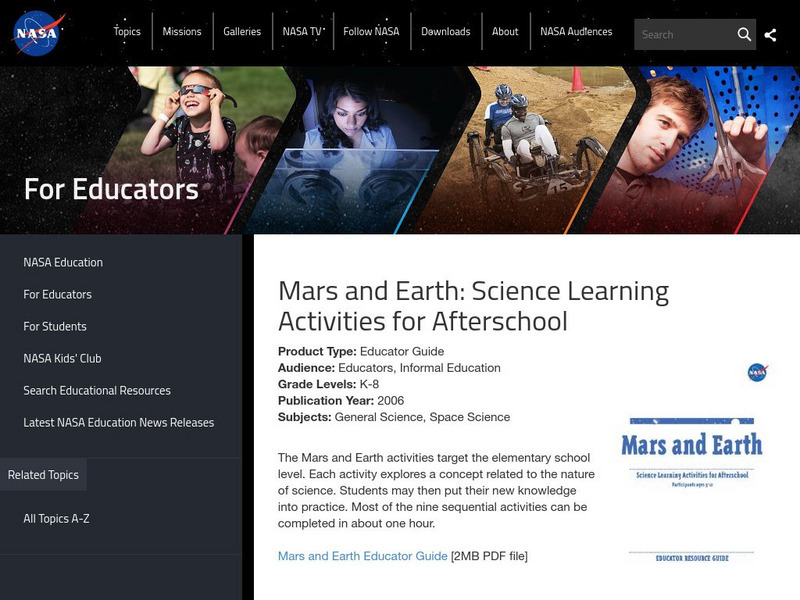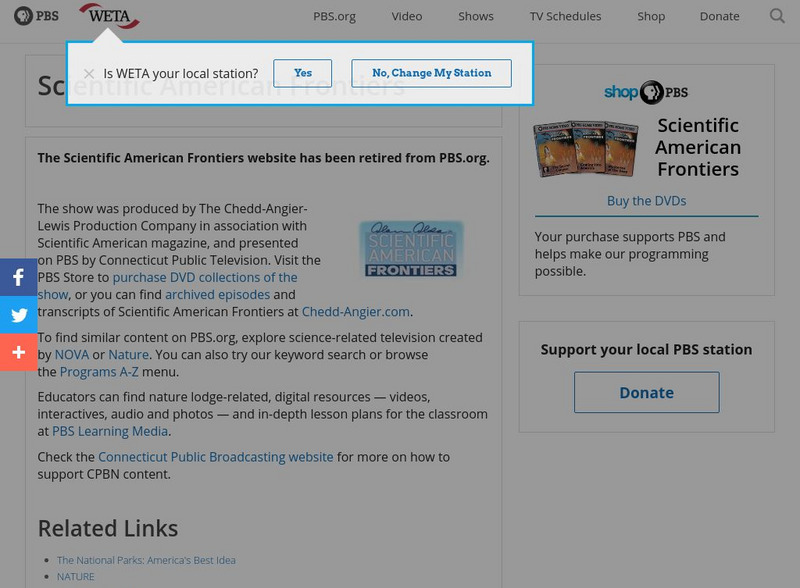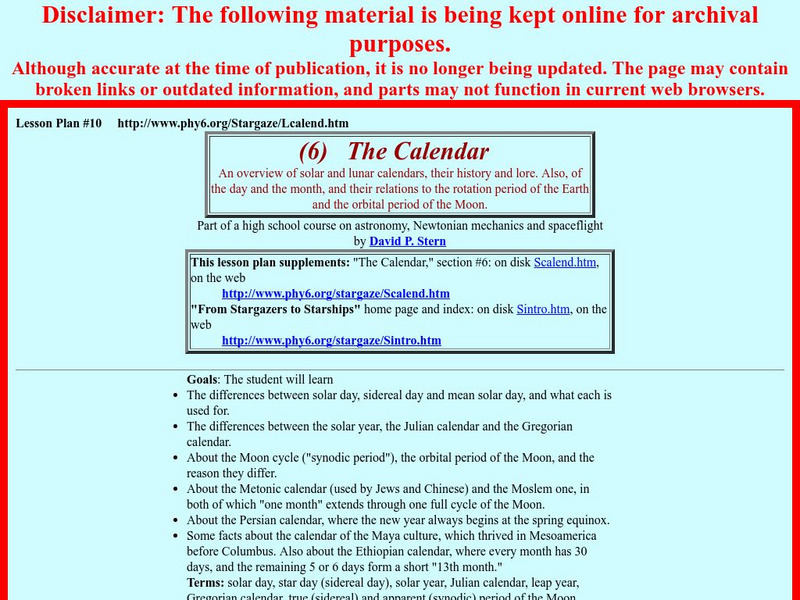Hi, what do you want to do?
Curated OER
Lives of Stars
Students take notes on the lives of stars. In this lesson on stars, students take notes alongside a PowerPoint presentation about the lives of stars.
Curated OER
The Solar System
Learners research the characteristics of planets in our solar system. In this space science instructional activity, students create a solar system model with each planet arranged according to their distance from the sun. They solve...
Curated OER
Soil Comparison and Analysis
Students perform tests on different soil samples. In this earth science lesson, students classify the soil into groups according to test results. They write a lab report following a certain criteria.
Curated OER
Make a Spaceship
Pupils create a spaceship, satellite, or space station. For this space lesson, students consider design elements for buildings and objects in space. Pupils use K'Nex, Legos, or other household materials for their creation. Students draw...
ReadWriteThink
Read Write Think: Astronomy Poetry: Combining Poetry With the Content Areas
In this lesson, middle schoolers listen to and discuss poetry that pertains to the study of astronomy and write their own poems to enhance their learning of the subject. As a final project, students use the ReadWriteThink Printing Press...
Science Buddies
Science Buddies: Kinesthetic Astronomy: Earth's Rotation
This kinesthetic activity will demonstrate concepts like rotation and orbit, clarify movement and direction, and help students understand why earthlings see different things in the sky.
Science Buddies
Science Buddies: Kinesthetic Astronomy: Longer Days, Shorter Nights
This kinesthetic activity demonstrates to students that the Earth's tilt is what is responsible for shifting light patterns and the change in seasons.
Other
National Optical Astronomy Observatory: Jewels of the Night
Using the Jewelbox Cluster, students determine the cluster's age based on measurements of its color and brightness.
NASA
Nasa: Kepler: A Search for Habitable Planets: Transit Tracks
Classroom lesson for teaching astronomy uses PowerPoint presentations and illustrations of Kepler's light curves used to discover planets.
Science Buddies
Science Buddies: A Puzzling Parallax
Did you know that ancient astronomers could measure the distance to other stars? They could also distinguish between stars and planets. How could they do that without modern technology of telescopes? See if you can discover the link...
Other
Teach With Movies: Lesson Plans Based on Shorts and Clips
Links to many video-clip based lessons in the areas of health, English language arts & drama, mathematics, music, biology, earth science, inventions, astronomy, physics, chemistry, U.S. history and culture, and world history and...
Teachnology
Teachnology: Science Lesson Plans
Great lesson plans covering a wide-range of science-related subjects. A wonderful resource for wonderful teachers!
Discovery Education
Discovery Education: Lesson Plans Library K 5
This resource presents a lesson plan library which holds hundreds of lesson plans organized by grade level and subject area. Often rooted with an Internet research piece, each lesson plan contains specific objectives, procedures,...
Science Education Resource Center at Carleton College
Serc: Investigating Lunar Phases
In this astronomy classroom activity, students will investigate how shadows create the phases of the moon. Students will record the phases of the moon.
Other
Center for Educational Resources: Sky Paths
Lesson activities where students observe and describe the movements of objects in the sky in both daytime and nighttime. They learn how early cultures regarded the skies, and the stories they told about them. Students will be given the...
Utah Education Network
Uen: Lunar Language
This lesson engages students in listening and viewing comprehension strategies to help them learn about the phases of the moon. Students will use a specialized graphic organizer to draw and describe observed moon phases. A sheet with ABC...
NASA
Nasa: Mars and Earth: Science Learning Activities for Afterschool
This set of activities teaches students about the big picture of science using Mars as an example: how to collect data, use evidence, and look at models.
American Association of Physics Teachers
Com Padre Digital Library: Open Source Physics: Colliding Galaxies
Examine colliding galaxies with this science simulation that demonstrates how galactic bridges are formed and how galactic cores are made up.
Varsity Tutors
Varsity Tutors: Web English Teacher: N. Scott Momaday
Learn more about N. Scott Momaday's work when you explore the links found within this site. These links provide lesson plans and activities for "The Way to Rainy Mountain" and other works.
PBS
Pbs Teachers: Scientific American: Science in Paradise: Big Dish
Investigate the science of radio astronomy, and create a model of a curved reflecting dish that will work like the Arecibo detector to detect electromagnetic waves. Explore risk using a risk space grid.
NASA
Nasa: From Stargazers to Starships: The Calendar
A lesson plan that gives an overview of solar and lunar calendars, their history and lore. Also, of the day and the month, and their relations to the rotational period of the Earth and the orbital period of the Moon.For versions in...
National Endowment for the Humanities
Neh: Edsit Ement: Galileo: Revealing the Universe
In this lesson plan, students will consider "Galileo: Revealing the Universe." The plan includes worksheets and other student materials that can be found under the resource tab.
Smithsonian Institution
Smithsonian Learning Lab: The Universe, an Introduction
Start with the questions all students ask: How big is the universe, how far away are the planets and stars, how did they form and when, how do they move and why? Build on their natural curiosity. The Smithsonian, in cooperation with...
Space Telescope Science Institute
Amazing Space: Hubble Deep Field Academy
At this site, students can become a Steller Statistician, Cosmic Classifier, Galactic Guide or a Universal Graduate by attending the Hubble Deep Field Academy--and entering information in their Hubble Academy Log (HAL), which is assessed...
Other popular searches
- Astronomy and Space Science
- Astronomy Vocabulary
- Planets and Astronomy
- Astronomy Activity
- Science Astronomy
- Ancient Astronomy
- Astronomy Lesson Plans
- History of Astronomy
- Space Science Astronomy
- Space and Astronomy
- Astronomy Navigation
- Astronomy History









